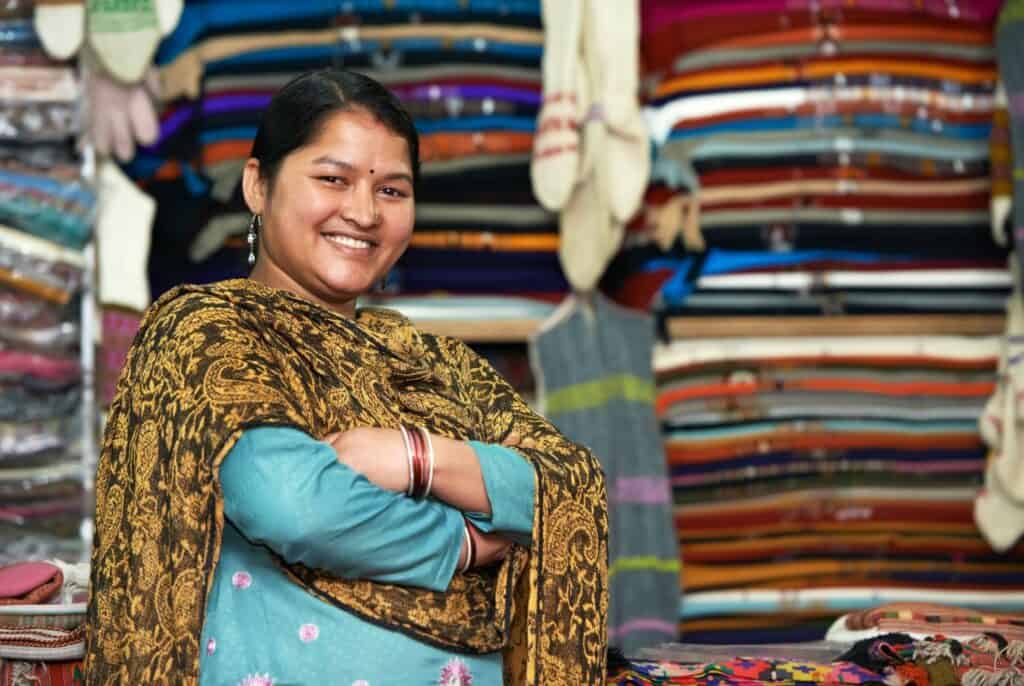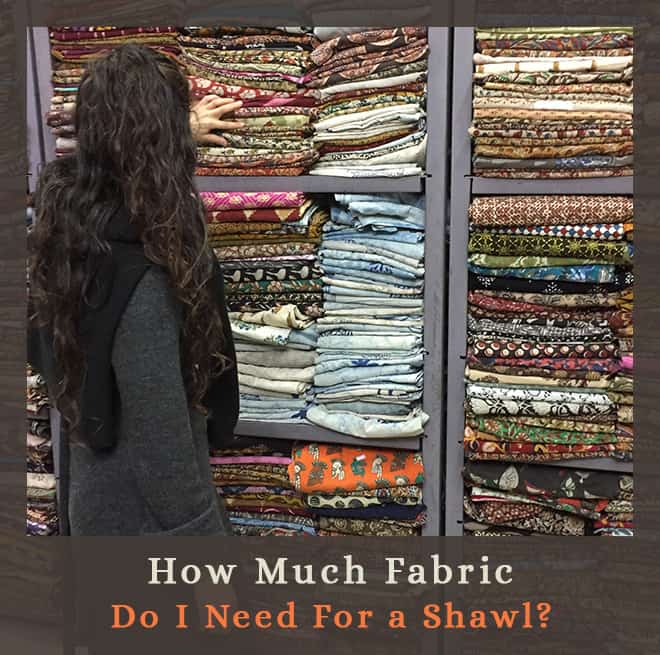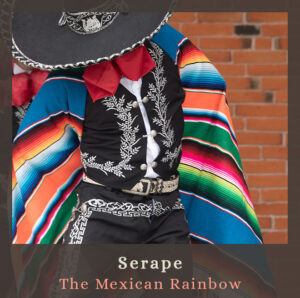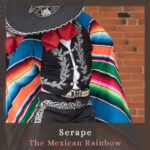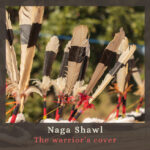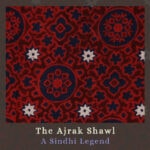It depends! Let’s talk about shawl sizes, choosing a fabric, and more details for making your own perfect shawl, and enjoy doing it!
Don’t Have the Time to Read it All? Here are the Key Takeaways for Buying Fabric for a Shawl:
- Fabric size: There’s no “formal” size for a shawl, my personal recommendation for a standard cozy shawl is 71’’- 82.5’’ long X 31.5’’- 43.5’’ wide. (80-110cmX180–210cm).
- Fabric width: Different manufacturers produce different fabric widths. Keep in mind the width of the fabric when shopping to avoid having to stitch two pieces together for your shawl.
- Fabric comfort: Since shawls touch sensitive skin areas, ensure the fabric is not itchy or uncomfortable. Read reviews if buying fabric online, especially for wool.
- Fabric GSM: (grams-square-meter), This information may not always be available but can help you determine the fabric’s warmth. Note that there are exceptions, like pashmina shawls.
- Fabric hem: Consider whether you want to use the fabric’s edge for your shawl, which can be BEAUTIFUL and save you some stitching work.
- Fabric care: Choose a fabric that suits your preferred washing method. Some fabrics require dry cleaning or gentle hand washing, while others can be machine washed without damage.
Read on as we dive into the details!
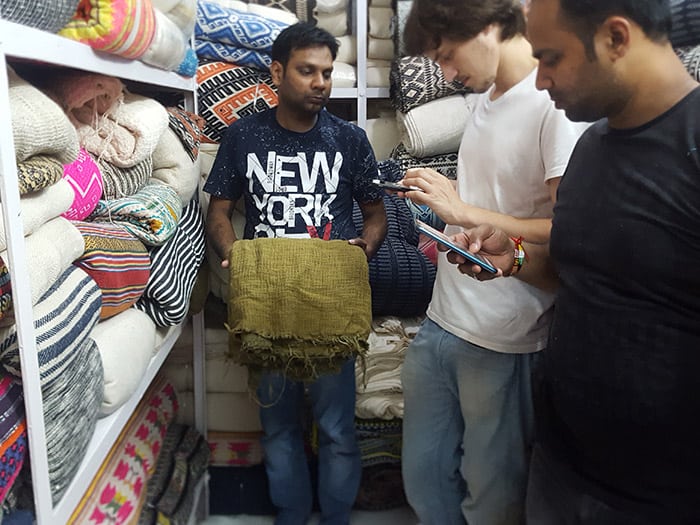
Are you about to DIY a shawl? Awesome!
Making your own shawl is so fun and actually quite easy; it requires some thinking and researching for the fabric, but each of these steps can be a great pleasure.
The variety of fabrics you can find in physical fabric shops or online is endless and incredible, so you better have an idea of what you wish for.
As a fashion designer, I’ve been to this process myself many (many!) times, and if you are about to make your own shawl, you might wish for some tips of experience.
So I’ve made a list of some things you’ll need to consider before purchasing a fabric for your new shawl. Let’s get to it!
Shawl sizes
Shawl’s designs and sizes vary A LOT and do not have a formal standard size. However, the average rectangle shawl is usually somewhere around 50’’ to 90’’ in length and 20’’ to 45’’ inches in width.
(127-228cm X 50-115cm)
This size range is comfortable for most uses, but since shawls are so versatile and interpreted differently across the world, different shawls will require different fabric sizes.
To give some examples:
The average bridal shawl can be pretty small and made with delicate lace or crochet, there’s the luxurious men’s Indian shawl which can be almost 120 inches long, and there are blanket shawls that can be very wide.
As briefly mentioned, shawls are not the most “defined” garments out there, there are Indian shawls, poncho shawls, Pakistani shawls, Scottish shawls, Spanish shawls, and some may call a medium-large scarf – a shawl!
So how much fabric exactly do you need for a shawl? Here’s my Personal Recommendation:
During my work as a fashion designer and seamstress, I tried many sizes of shawls over the years, from my experience, I would say that a decent, cozy, not too huge or clumsy shawl size, is somewhere around: 31.5 – 43.5’ inches wide to 71 – 82.5 inches long. (80-110 cm wide to 180 cm – 210 cm long).
This size is long enough to provide a comfortable wrap and wide enough to cover the lower back, which is essential when it’s cold. It is big enough to cover as a blanket while it remains comfortable to carry and stylish.
Of course, sizes may vary with your purpose and the fabric you have or are about to buy.
So let’s talk a bit about the fabrics:
Buying Fabrics – How it Works?
For me, buying fabrics is the fun part! it’s a world of wonder and magic, the abundance of types, textures, and colors is enchanting, and this is a great place to get some ideas for your dream shawl and make it real.
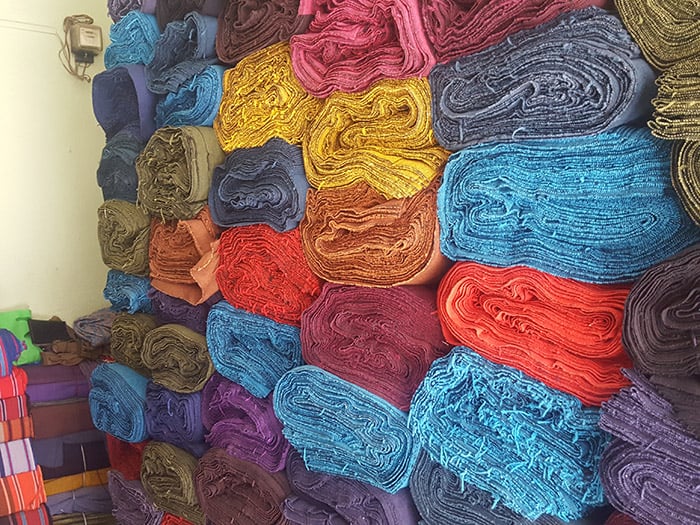
If you’re new to buying fabrics, you might not yet consider the fact that not all fabrics were born equal:
Different fabrics are made in variable widths according to the loom (or knitting machine) and the client’s demand. When you go to a fabric shop, you’ll find many different widths.
*I’m talking about the width because fabric length, in most cases, will be available in your wishful size.
Back to the width, different manufacturers produce different widths of fabric, with many variations. For example, it is common in India to find fabrics of around 40’’ (1 meter) in width, whereas fabrics originating from China, Singapore, or Turkey will probably be 60’’-70’’ (1.6/1.8-meter) in width, which is a huge difference.
But for a shawl in the cozy size I’ve mentioned before, even the Indian fabric will be sufficient.
You might even have to hem or fringe it only on two edges, not four, since the raw hem is quite beautiful in many fabrics.
One of the shawl’s beauty and comfort secrets is its wholeness, its perfect cloth. So the first thing you want to check is if the fabric is wide enough to fit the size of the shawl you want. Cause if it is not, you’ll have to take into consideration that you’ll have to make some stitches, and unless you want to mix two fabrics or more for the design you have in mind, I think you would much prefer not to have a stitch in the middle of your shawl.
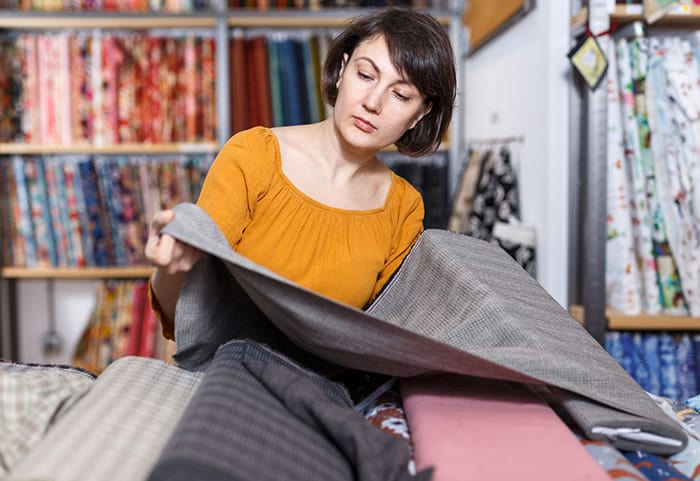
What’s important to take into consideration & What to avoid?
How it Feels
What can be more important?
Since shawls come into contact with sensitive areas of our skin like the neck and the face, it’s absolutely essential that the fabric you’re buying won’t be itchy or just not nice to touch…It is especially the case with some woolen shawls that can be very itchy sometimes.
If you’re buying your fabric online, make sure to read some reviews first, especially if it’s wool!
Want a Natural Shawl? Here’s how to verify it:
If you want to make a shawl using natural fabrics, make sure to take out some fibers from the fabric and burn them, if it becomes ashes, you know it’s natural, if it becomes burned-plastic-like, it’s not.
If it’s anything in between, it’s somewhere in between (:
GSM (grams-square-meter)
Actually, this information is not to be found for all fabrics since many rolls came from stock buying and these do not always come with their IDs. However, if this info is available, it can give you a sense of how warm the fabric is going to be, especially when buying online.
It’s important to note that there are exceptions for this one, for example, pashmina shawls are lightweight and warm, but with most fabrics, this can be a decent indication of the level of warmth.
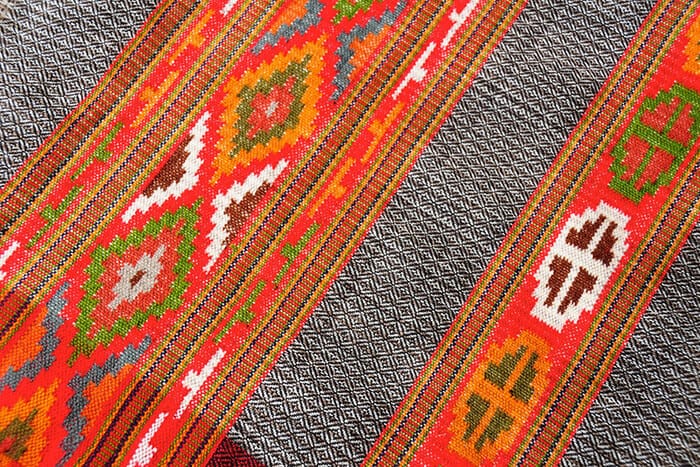

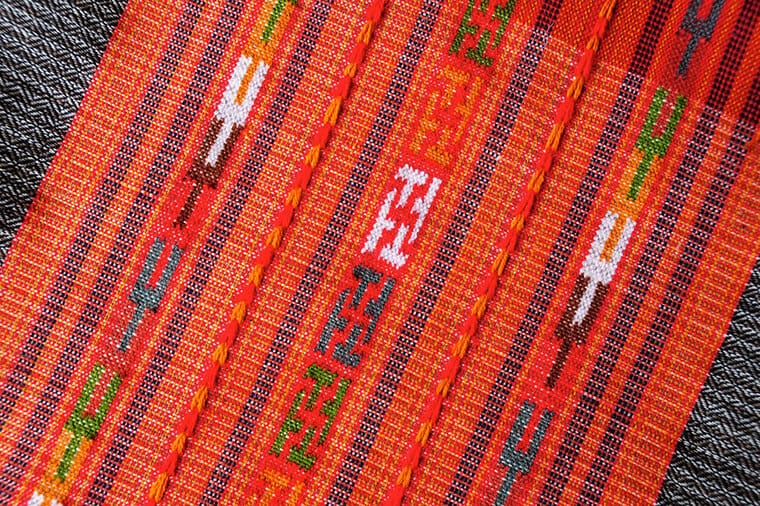
Do you want to use the fabric’s hem?
That’s a really important point that not everyone takes into account!
As I mentioned, In some cases, the fabric’s edge is really nice and can be used for your shawl! (and on the way, save you 2 stitches 😊)
Knitted fabric? Make sure the edges won’t roll!
Oh, men, I’ve been there! Buying a beautiful, unique yarn straight from the shepherd to make a shawl, paying an Indian lady to knit it, and after 2 weeks of work, the edges are rolling over themselves, what a pain!
If you are going to buy a knitted fabric to make a shawl, make sure the edges don’t roll over themselves. And if they do, take into consideration that you’ll need to make the shawl a bit bigger.
How are you planning to wash the shawl?
Some shawls require strict drycleaning or gentle handwash, and even though it’s nice to do, it’s not for everyone. If you want a shawl that you can just throw in your pile of dirty clothes and let the washing machine take care of it, it’s important to choose a fabric that can handle it without shrinking or being destroyed.
In conclusion
Creating your own shawl can be a fun and VERY rewarding experience. When you choose the fabric and make the shawl yourself, you won’t want to take it off – Don’t say I didn’t warn you! 😊
To achieve the best results, consider the size, fabric type, width, comfort, and care instructions before making your purchase. By paying attention to these key factors, you can ensure that your DIY shawl not only looks stylish but also provides the desired warmth and comfort. Enjoy the creative process and embrace the GREAT satisfaction of making a beautiful, personalized shawl that suits your needs and looks perfect!
